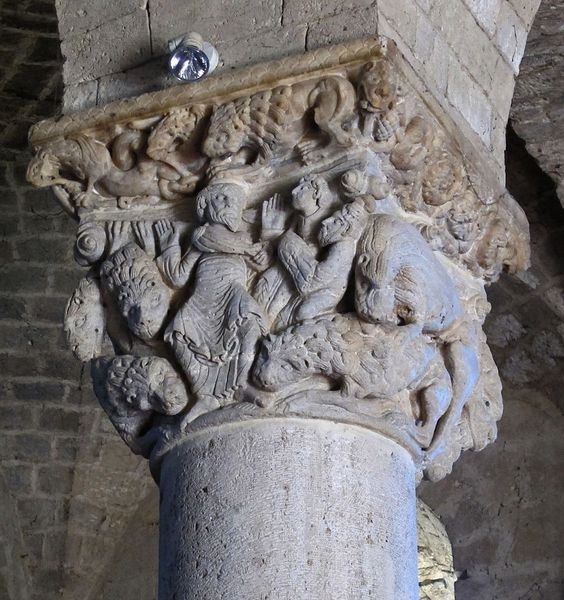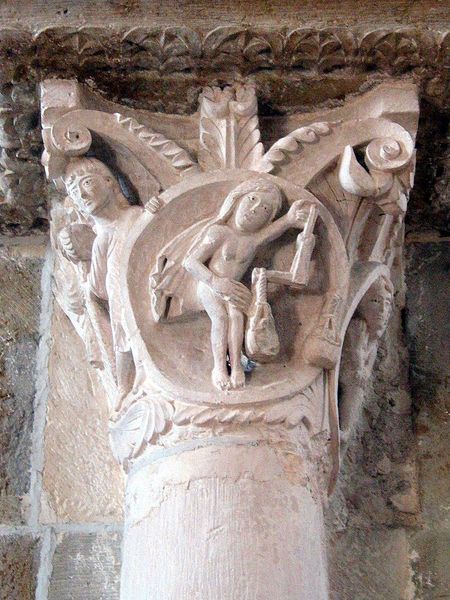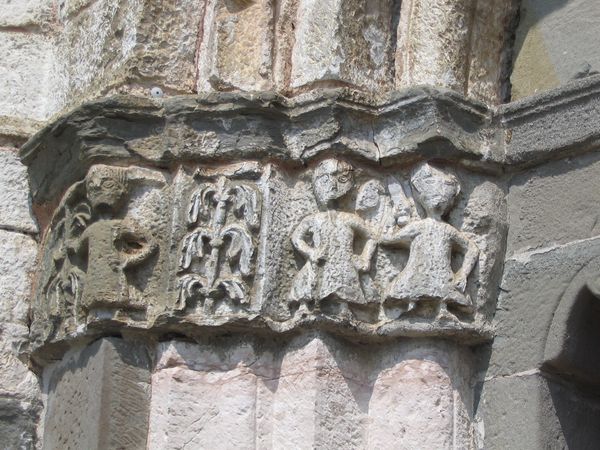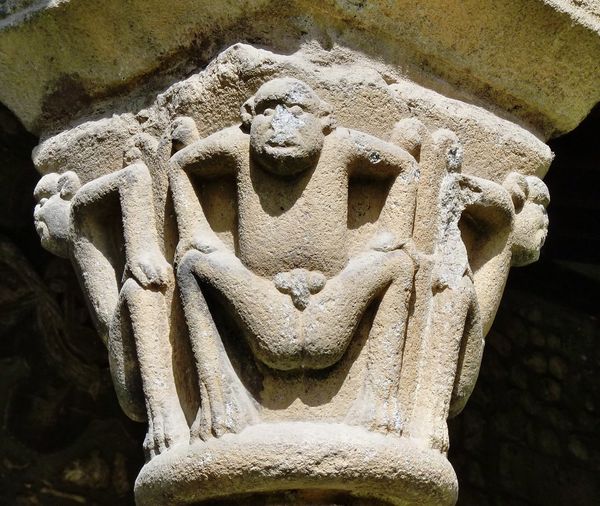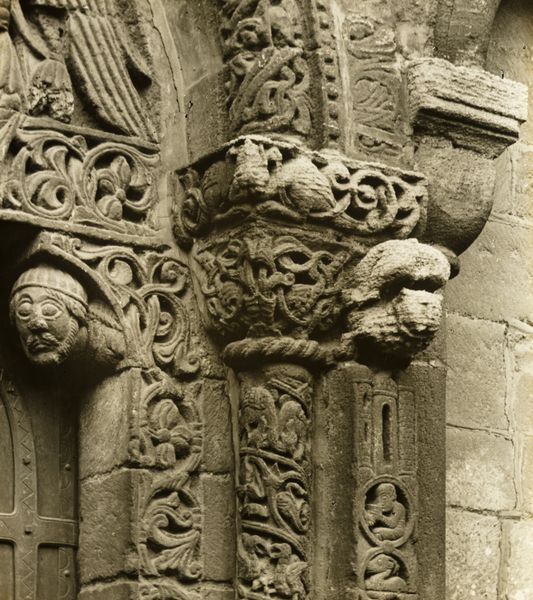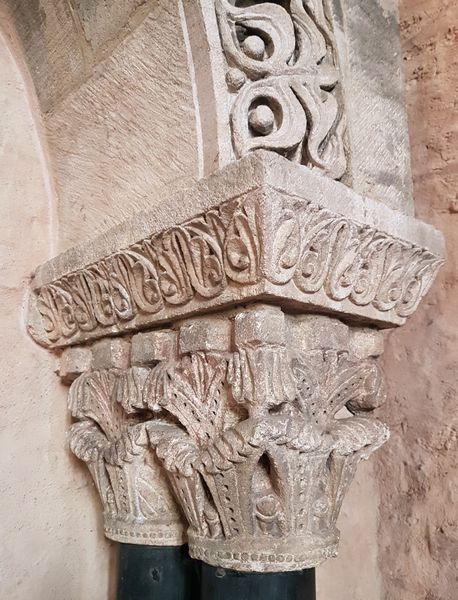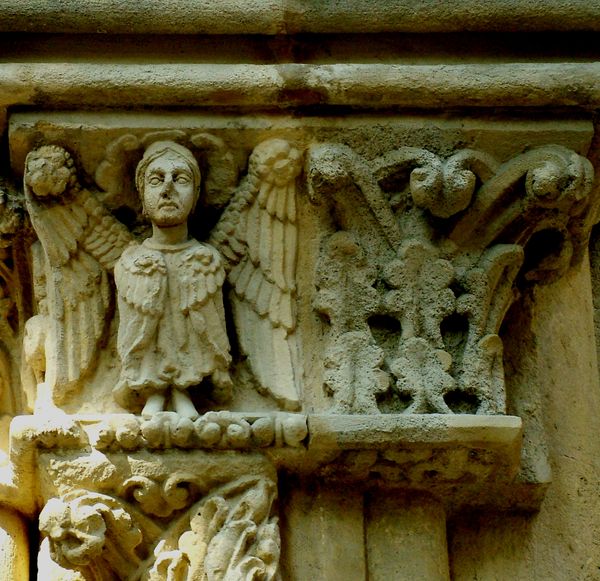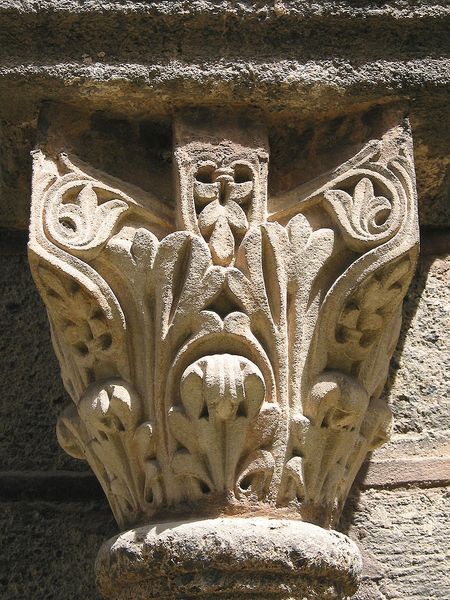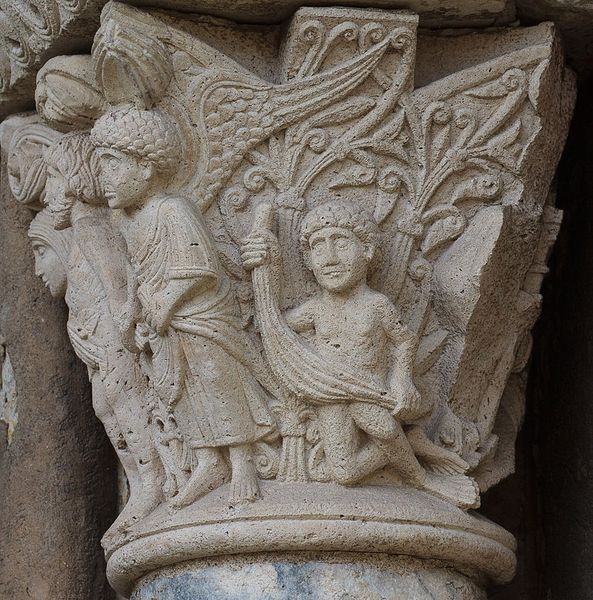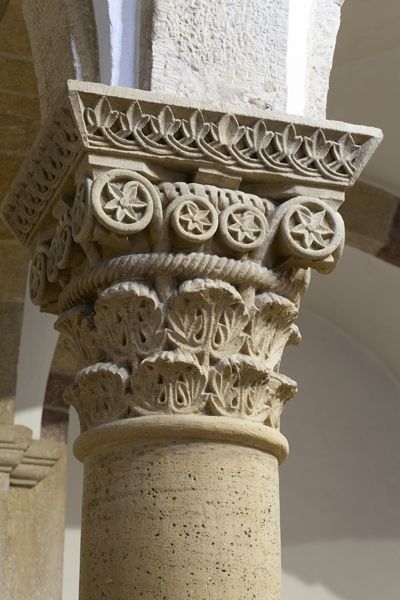
carving, relief, sculpture, marble, architecture
#
carving
#
sculpture
#
relief
#
figuration
#
romanesque
#
sculpture
#
marble
#
architecture
Copyright: Public domain
This is the capital of a column, carved in stone by Romanesque architects for the Rotunda of San Tomè in Bergamo, Italy, sometime between the 11th and 13th centuries. The eye is immediately drawn to the blocky, weighty forms and the rough texture of the stone. Figures are carved around the top of the column in low relief, their faces and bodies simplified into geometric shapes. The figures seem to emerge organically from the stone itself, rather than being imposed upon it. This approach reflects the Romanesque aesthetic, where sculpture was integral to the architecture. Consider how the column isn't just a structural support, but also a symbolic one. The carved figures, perhaps angels or saints, act as intermediaries between the earthly and divine realms, reinforcing the church's role as a sacred space. Notice how the capital's design directs the viewer's gaze upward, encouraging contemplation and spiritual reflection. It is a testament to how architectural elements can function as both physical and symbolic components within a larger structure of meaning.
Comments
No comments
Be the first to comment and join the conversation on the ultimate creative platform.
